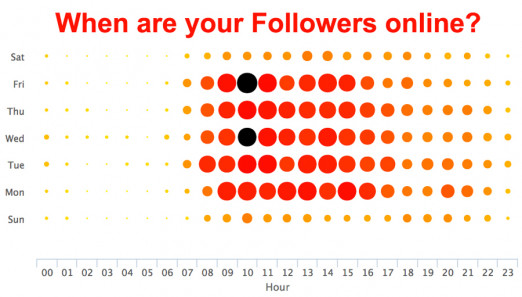A couple of years ago I was approached by a construction product company’s marketing department about a problem. A year previously, they had decided to get into using Twitter to market their (very well known) brand, and their ‘full service’ agency had said, ‘yes we do Twitter, and Facebook’ and offered to ‘do it’ for them.
Twelve months (and over £10,000 later) they contacted me because they were a little concerned about the results. The number of followers and likes they were getting wasn’t impressive, they weren’t getting any clicks through to their website from their tweeted press releases and there were no new enquiries they could link back to their twitter, or facebook campaigns. It’s not that architects aren’t on twitter, or facebook, it’s just they weren’t responding.
Why wasn’t it working?
The answer to this question is simple. The company (and their agency) were mistaking twitter for a push marketing tool. They were using it in the same way they would publish news articles on their website or send out news releases to journalists. They were broadcasting their PR.
What they weren’t doing was listening, or participating in a conversation.
Last week when I was filming some short videos with the B1M on social media and BIM, I got into a conversation with Fred, Tom and Rob about this phenomenon. Whilst it was three years ago, companies are still doing it now, going into a very noisy space like twitter and shouting about how great they are.
Fred made a telling statement.
‘You wouldn’t go into a room full of prospects, read out your press release and leave, would you? So why do people do that on social media?’
One of the reasons people still do this I think, is that despite good intentions, most marketers don’t understand what social media is, or they can’t find a way to get round the traditional ways of doing things and take a different approach. This is exacerbated by the silo nature of our companies – sales don’t talk to marketing, marketing don’t talk to technical, technical don’t talk to customer service. The problem with social media is that these silos are broken down, so if your twitter account is PR, and I want technical advice, I’ll just not bother to follow you, because I’m not interested in what you’re doing. I want something else, and you are clearly not in a position to provide it, so I’ll go somewhere else. I recently saw this with one of my architect friends who asked two windows manufacturers a technical question. One came straight back with a full and helpful answer, and he switched from recommending his preferred product to the new one, just like that.
So what do we need if we really want to be successful on twitter as a construction product company?
1. We need a strategy.
Look at tools like twitter as part of a wider landscape. You may be on loads of platforms at the moment, but where is the audience, and what do they want there? I run a strategy workshop which helps companies sort out answers to these questions and plan out what they really should be doing online.
2. We need to listen.
Whoever you want to talk to, you can bet that they are busy people. If they don’t want something, with social media you really do get instant feedback, and sometimes it’s not good! Don’t imagine that because we don’t listen that people aren’t talking about us. They may also be talking to our competitors. In order to have a positive effect on this, we must listen to what our audience is doing online, so we can behave like human beings and not some autobot.
3. We need to be useful.
Listening is crucial, but when we’ve heard what people are saying, and we know what they need, we need to make something useful for them. If we do this right, then people will share our useful stuff and we’ll finally start getting some traction.
One of the major things I spend my time doing with consulting clients is helping them be useful to architects in the right way. It’s not the traditional marketing way to do things, but it really does work. One of my clients has a blog post on their website with over 20 comments including people leaving their phone numbers asking for a representative to call them. It’s one of the most visited pages on their site and has been associated directly with hundreds of thousands of pounds in product sales.
4. We need to tell stories.
Seth Godin, one of the new media pioneers, once wrote a book called ‘All Marketers are Liars’. It’s a great read. In it he said that
“There are just two things which separate success from failure in most organisations today.
- Invent Stuff worth talking about;
- Tell Stories about what you’ve invented.”
Everyone loves stories, but to tell them we have to know them, we have to have the expertise our audience is looking for, which brings us to number 5, the most important:
5. We need people.
Right at the core of social media is people. People making useful stuff. People talking to other people on the internet. People asking and answering questions. Unless you are BBC Breaking News, you can’t give your agency a corporate account and expect them to pretend to be you. It doesn’t work. People want to talk to human beings, and ideally people whom they trust.
So at the core of social media is human-to-human relations. Who in your company is client facing like this? Whose job is it to develop relationships with customers? Who has the technical product expertise and years of experience that specifiers want to draw upon?
Those are the people that should be on Twitter.
Maybe you can’t get all of them to do it. Maybe there are many who don’t believe it will work, but you can find examples, through your listening, that will show them the potential, and I can help with that. Over time if a few keen early adopters take it up, they may well bring along others with them, once the value of it has been demonstrated.
In April I’ll be running another ‘Twitter for Professionals’ workshop. It’s specifically designed for client-facing people who want to use twitter to develop their relationships, whether they be with architects and specifiers, or with clients and advocates in professional services. If you have client-facing people in your organisation who would like to learn, why not bring them along? They really are the best tool for the job.
Image: by Eric Fischer (creative commons)
Su Butcher
 Su Butcher works with construction companies to enable them to integrate social tools and other Internet activity for business benefits. Trained in Architecture at the University of Liverpool, she has extensive experience working with architects in business. Su is currently working with The Building Centre to deliver a series of Training Workshops from February 2015.
Su Butcher works with construction companies to enable them to integrate social tools and other Internet activity for business benefits. Trained in Architecture at the University of Liverpool, she has extensive experience working with architects in business. Su is currently working with The Building Centre to deliver a series of Training Workshops from February 2015.

